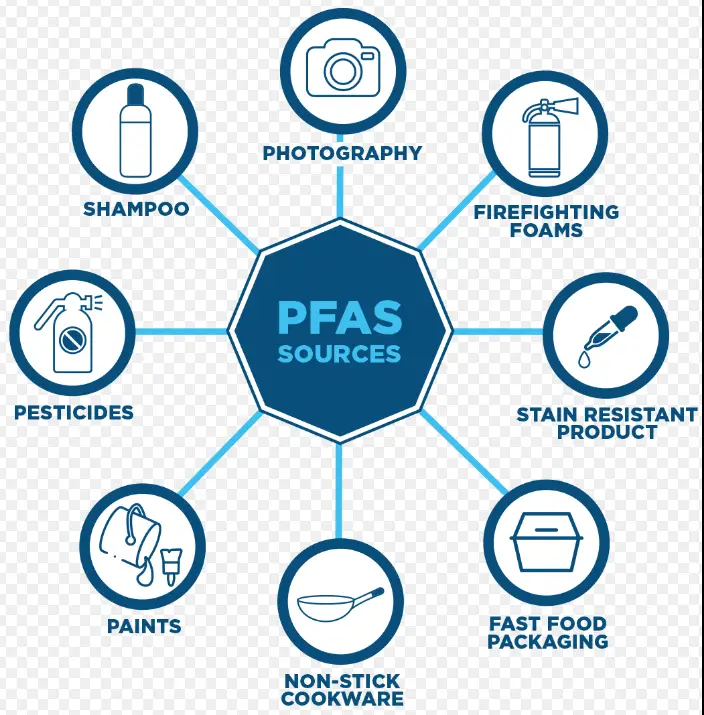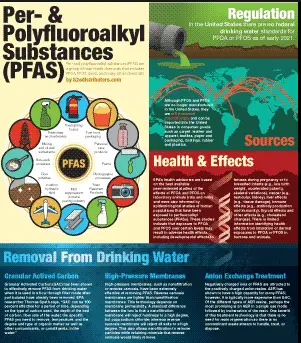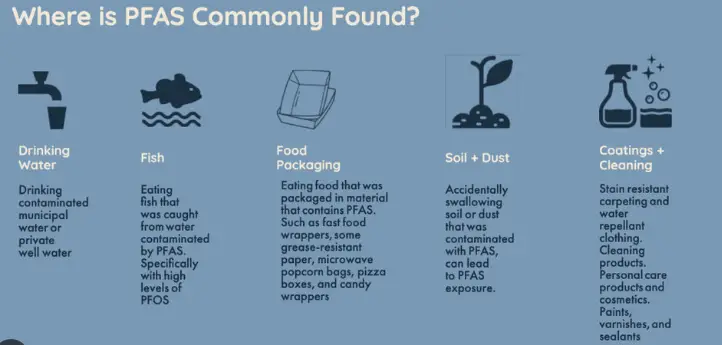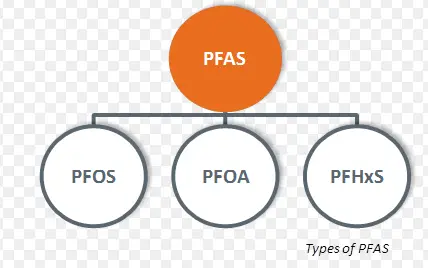PFAS (Per- and polyfluoroalkyl substances) and PFOS (Perfluorooctane sulfonate) have become prominent terms in discussions surrounding environmental and public health concerns. These chemicals, though often grouped together, hold distinct characteristics and implications. Understanding the difference between PFAS and PFOS is crucial for navigating their impact effectively.
In a nutshell, PFAS and PFOS represent classes of synthetic compounds known for their durability, heat resistance, and water-repellent properties. While both share commonalities in their chemical makeup, their individual traits dictate varied applications and environmental behaviors. Delving deeper into their distinctions sheds light on the complexities of addressing their presence in our surroundings.
As we delve into the intricate world of PFAS and PFOS, it’s imperative to grasp the nuances that set them apart. From their chemical structures to their respective environmental and health implications, this article aims to unravel the intricacies surrounding these compounds. Join us on this enlightening journey as we explore the difference between PFAS and PFOS and uncover the significance of distinguishing between the two.

Understanding PFAS
Brief Explanation of PFAS
PFAS, or Per- and polyfluoroalkyl substances, are a group of synthetic chemicals that have gained attention due to their widespread presence and potential health and environmental impacts. These compounds are characterized by their strong carbon-fluorine bonds, which contribute to their stability and resistance to degradation.
Chemical Structure and Characteristics
PFAS molecules consist of a chain of carbon atoms bonded to fluorine atoms. The carbon backbone can vary in length and branching, leading to a diverse range of PFAS compounds. This structural variability influences their properties, including water and oil repellency, heat resistance, and chemical stability.
Common Uses and Applications
PFAS have been utilized in a variety of consumer and industrial products for decades. Some common applications include:
- Manufacturing of non-stick cookware, food packaging, and stain-resistant fabrics.
- Firefighting foams, particularly aqueous film-forming foams (AFFF), used in firefighting and training exercises.
- Industrial processes, such as in the production of electronics, textiles, and metal plating.
Understanding PFOS
Brief Explanation of PFOS
PFOS, or Perfluorooctane sulfonate, is a specific type of PFAS compound that has garnered attention due to its widespread use and persistence in the environment. It belongs to a subgroup known as perfluoroalkyl sulfonates, characterized by the presence of a sulfonate functional group.
Chemical Structure and Characteristics
The chemical structure of PFOS consists of a perfluorinated carbon chain with a sulfonate functional group at one end. This configuration imparts PFOS with similar properties to other PFAS compounds, such as hydrophobicity and chemical stability. These characteristics contribute to its longevity in the environment.
Historical Uses and Applications
PFOS was historically utilized in various consumer and industrial products due to its unique properties. Some notable applications include:
- Firefighting foams, particularly in aviation and military settings.
- Textiles, including waterproofing treatments for clothing and upholstery.
- Electronics, as a component in semi-conductor manufacturing processes.
Environmental Impact of PFAS and PFOS
Persistence in the Environment
PFAS and PFOS are notorious for their environmental persistence, meaning they do not readily break down in natural conditions. This longevity allows them to accumulate in soil, water, and biota over time, posing long-term risks to ecosystems and human health.
Bioaccumulation in Wildlife
Due to their lipophilic nature, PFAS and PFOS have a tendency to accumulate in the fatty tissues of organisms. This bioaccumulation occurs as compounds move up the food chain, resulting in higher concentrations in predators at the top of the ecological hierarchy.
Contamination of Water Sources
One of the primary pathways for PFAS and PFOS contamination is through water sources. Runoff from industrial sites, landfills, and firefighting training areas can introduce these compounds into surface and groundwater, leading to widespread contamination of drinking water supplies and aquatic ecosystems.

Health Effects of PFAS and PFOS Exposure
Potential Health Risks Associated with PFAS Exposure
Exposure to PFAS has been linked to a range of health concerns, including:
- Disruption of hormone levels, leading to reproductive and developmental issues.
- Compromised immune function, increasing susceptibility to infections and diseases.
- Elevated cholesterol levels, which may contribute to cardiovascular problems.
Potential Health Risks Associated with PFOS Exposure
Similarly, exposure to PFOS has been associated with adverse health effects, including:
- Liver damage and dysfunction, due to PFOS’s hepatotoxic properties.
- Thyroid disruption, impacting hormone regulation and metabolism.
- Neurological effects, such as cognitive impairment and developmental delays in children.
Studies Linking PFAS and PFOS Exposure to Adverse Health Effects
Numerous epidemiological and toxicological studies have provided evidence of the health risks posed by PFAS and PFOS exposure. These studies have highlighted associations with conditions such as cancer, reproductive disorders, and immune dysfunction, prompting concerns about long-term health impacts.

Regulation and Legislation
Overview of Regulatory Measures
Governments and regulatory bodies worldwide have implemented various measures to address the contamination and exposure of PFAS and PFOS. These measures aim to protect public health and the environment by setting limits on permissible levels and implementing monitoring and enforcement mechanisms.
International and National Efforts to Control PFAS and PFOS Contamination
At the international level, organizations such as the United Nations Environment Programme (UNEP) and the Organization for Economic Co-operation and Development (OECD) have initiated efforts to assess and regulate PFAS and PFOS. Conventions and protocols have been established to promote cooperation and information sharing among countries.
National governments have also taken action to address PFAS and PFOS contamination. In the United States, for example, the Environmental Protection Agency (EPA) has developed guidelines and standards for monitoring and managing these substances. Similarly, European countries have implemented regulations under the European Chemicals Agency (ECHA).
Challenges in Regulating and Mitigating Exposure
Despite these efforts, challenges remain in effectively regulating and mitigating PFAS and PFOS exposure. Some of these challenges include:
- Lack of comprehensive data: Limited information on the extent and impact of contamination hinders regulatory decision-making.
- Complexity of contamination: PFAS and PFOS contamination is often widespread and persistent, making remediation efforts difficult and costly.
- Industry resistance: Some industries may resist regulatory measures due to financial implications or technological constraints.
Detection and Analysis Methods
Analytical Techniques for Detecting PFAS and PFOS
Advancements in analytical techniques have enabled the detection and quantification of PFAS and PFOS in various environmental and biological samples. These techniques include:
- High-performance liquid chromatography (HPLC) coupled with mass spectrometry (MS) for precise identification.
- Gas chromatography-mass spectrometry (GC-MS) for analyzing volatile PFAS compounds.
- Immunological assays for rapid screening of PFAS contamination.
Monitoring Strategies for Environmental and Human Exposure
Effective monitoring strategies are essential for assessing and mitigating PFAS and PFOS exposure. These strategies involve:
- Sampling of environmental media such as water, soil, and air to determine contamination levels.
- Biomonitoring studies to assess human exposure through blood and urine samples.
- Long-term surveillance to track changes in contamination levels and identify emerging hotspots.
Advancements in Detection Technology
Ongoing research and development efforts have led to advancements in detection technology, including:
- Miniaturized and portable devices for on-site analysis.
- Sensor technologies for continuous monitoring of PFAS and PFOS in real-time.
- Machine learning algorithms for data analysis and interpretation, enhancing the accuracy and efficiency of detection methods.
Mitigation and Remediation Strategies
Treatment Methods for PFAS and PFOS Contamination
Various treatment methods have been developed to remove or degrade PFAS and PFOS from contaminated environments. These methods include:
- Activated carbon adsorption for removing PFAS from water and wastewater.
- Advanced oxidation processes such as ozonation and UV irradiation for breaking down PFAS molecules.
- Bioremediation techniques using microorganisms to degrade PFAS in soil and groundwater.
Remediation Efforts in Affected Areas
Efforts to remediate PFAS and PFOS contamination in affected areas involve:
- Excavation and removal of contaminated soil and sediment.
- In-situ remediation techniques such as pump-and-treat systems and phytoremediation.
- Long-term monitoring to ensure the effectiveness of remediation efforts and prevent recontamination.
Challenges and Limitations in Mitigation Strategies
Despite advances in mitigation technologies, several challenges and limitations persist:
- Cost: Many mitigation methods are expensive and resource-intensive, posing challenges for implementation, particularly in low-income communities.
- Effectiveness: Some techniques may have limited effectiveness in removing certain PFAS compounds or addressing widespread contamination.
- Regulatory hurdles: Lack of regulatory standards for remediation and uncertainty regarding liability and responsibility hinder mitigation efforts.
Future Outlook
Emerging Research Areas Related to PFAS and PFOS
Continued research is essential for addressing knowledge gaps and developing innovative solutions for PFAS and PFOS management. Emerging research areas include:
- Alternative materials: Exploring greener alternatives to PFAS in consumer products and industrial processes.
- Health effects: Investigating the long-term health impacts of PFAS and PFOS exposure on vulnerable populations.
- Fate and transport: Understanding the environmental behavior and transport pathways of PFAS and PFOS to inform mitigation strategies.
Potential Advancements in Regulation and Mitigation Efforts
Future advancements in regulation and mitigation efforts may include:
- Development of comprehensive regulatory frameworks to address PFAS and PFOS contamination at the national and international levels.
- Investment in research and development of cost-effective and sustainable mitigation technologies.
- Collaboration among stakeholders, including government agencies, industry, and academic institutions, to coordinate response efforts and share best practices.
The Importance of Continued Monitoring and Research
As we look towards the future, it is imperative to prioritize continued monitoring and research to address the challenges posed by PFAS and PFOS contamination. By building on existing knowledge and collaborating across disciplines, we can work towards effective and sustainable solutions to protect human health and the environment from these pervasive pollutants.
Frequently Asked Questions
What are the main sources of PFAS and PFOS contamination?
PFAS and PFOS contamination primarily stem from industrial activities, firefighting foam, consumer products, and legacy pollution sites. These chemicals can leach into soil and water, leading to widespread environmental exposure.
What are the potential health effects of PFAS and PFOS exposure?
Exposure to PFAS and PFOS has been linked to various health concerns, including reproductive issues, immune system disruption, and certain types of cancer. Continued research aims to fully understand the long-term impacts on human health.
How are PFAS and PFOS regulated?
Regulation of PFAS and PFOS varies globally, with efforts focused on monitoring, mitigation, and remediation. Regulatory bodies set limits on permissible levels in water and consumer products, with ongoing initiatives to strengthen regulations and enforcement measures.
Conclusion
In conclusion, distinguishing between PFAS and PFOS is essential for comprehensively addressing their environmental and health ramifications. As we navigate the complexities of regulating and mitigating these chemicals, awareness and informed action remain paramount. By staying vigilant and proactive, we can strive towards a safer, healthier future for generations to come.

